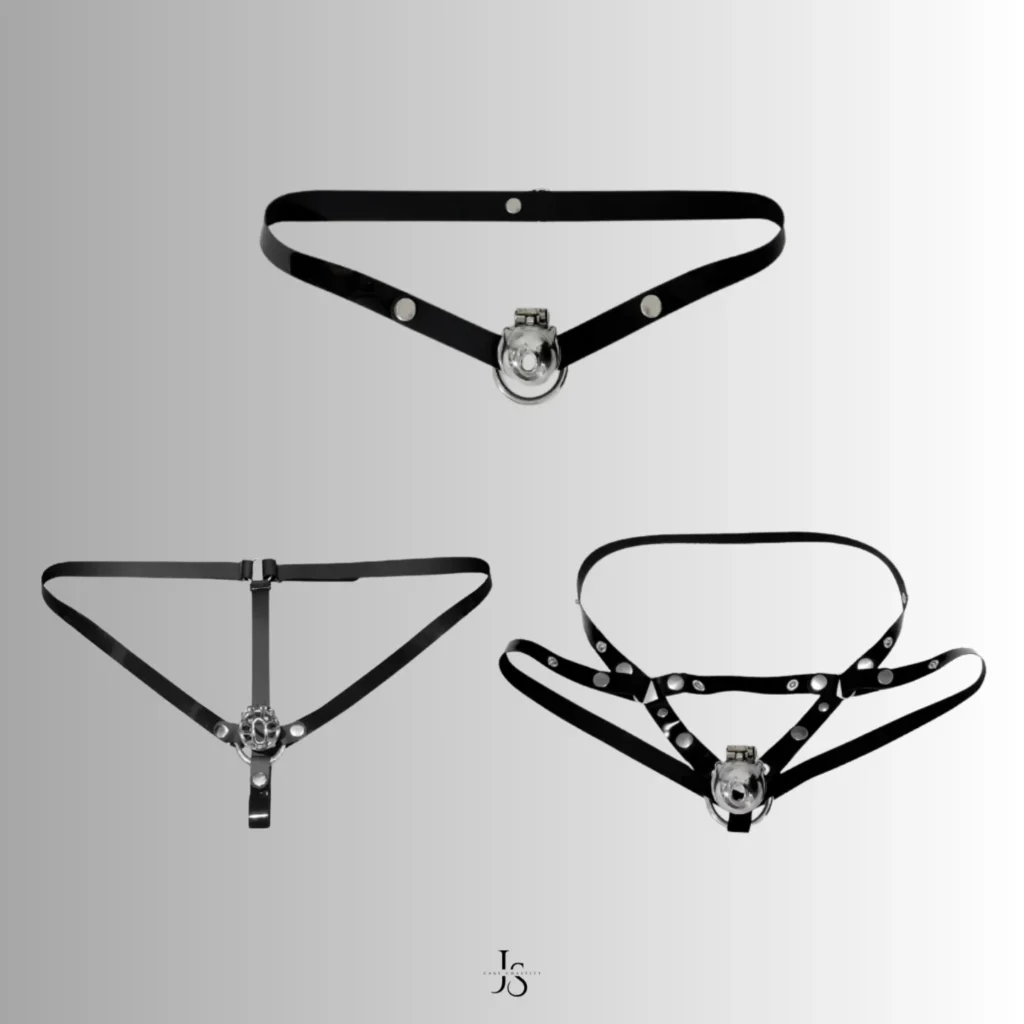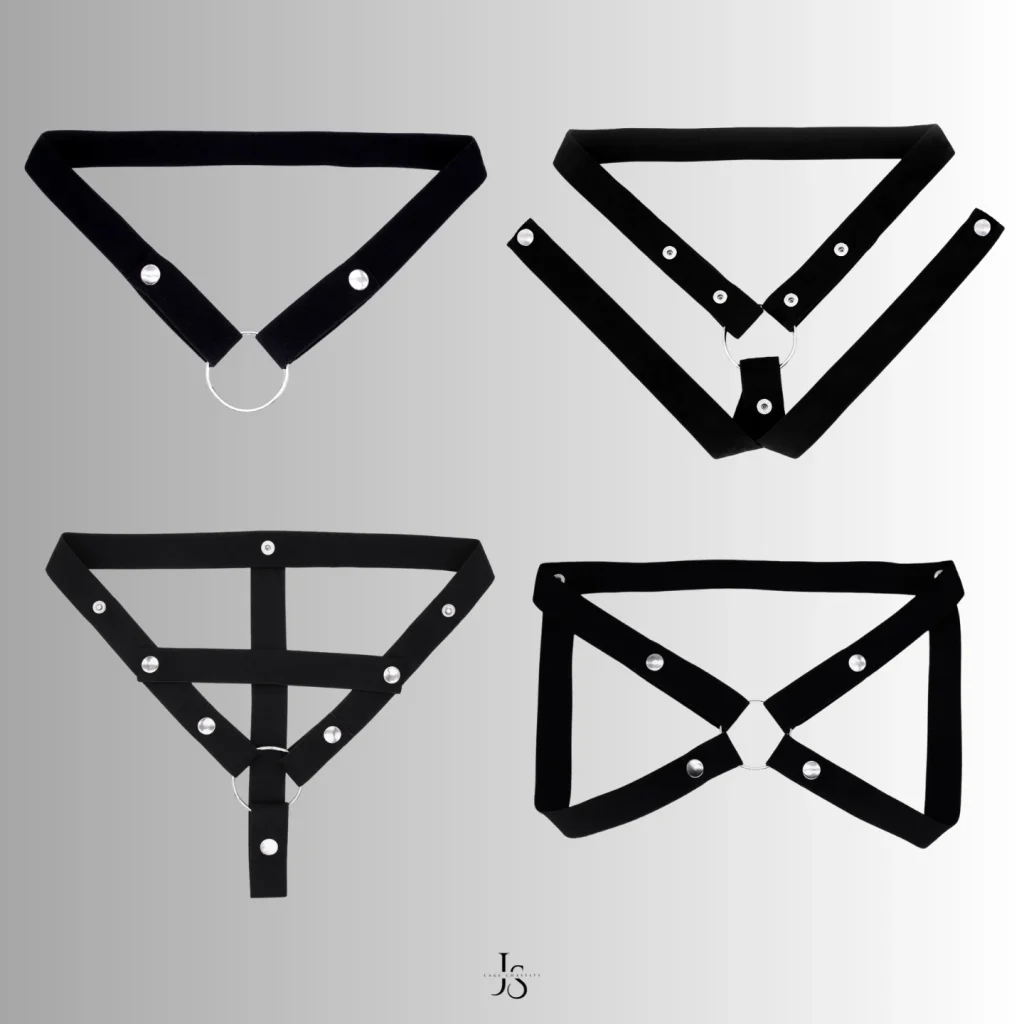1. How to Measure for Chastity Cages
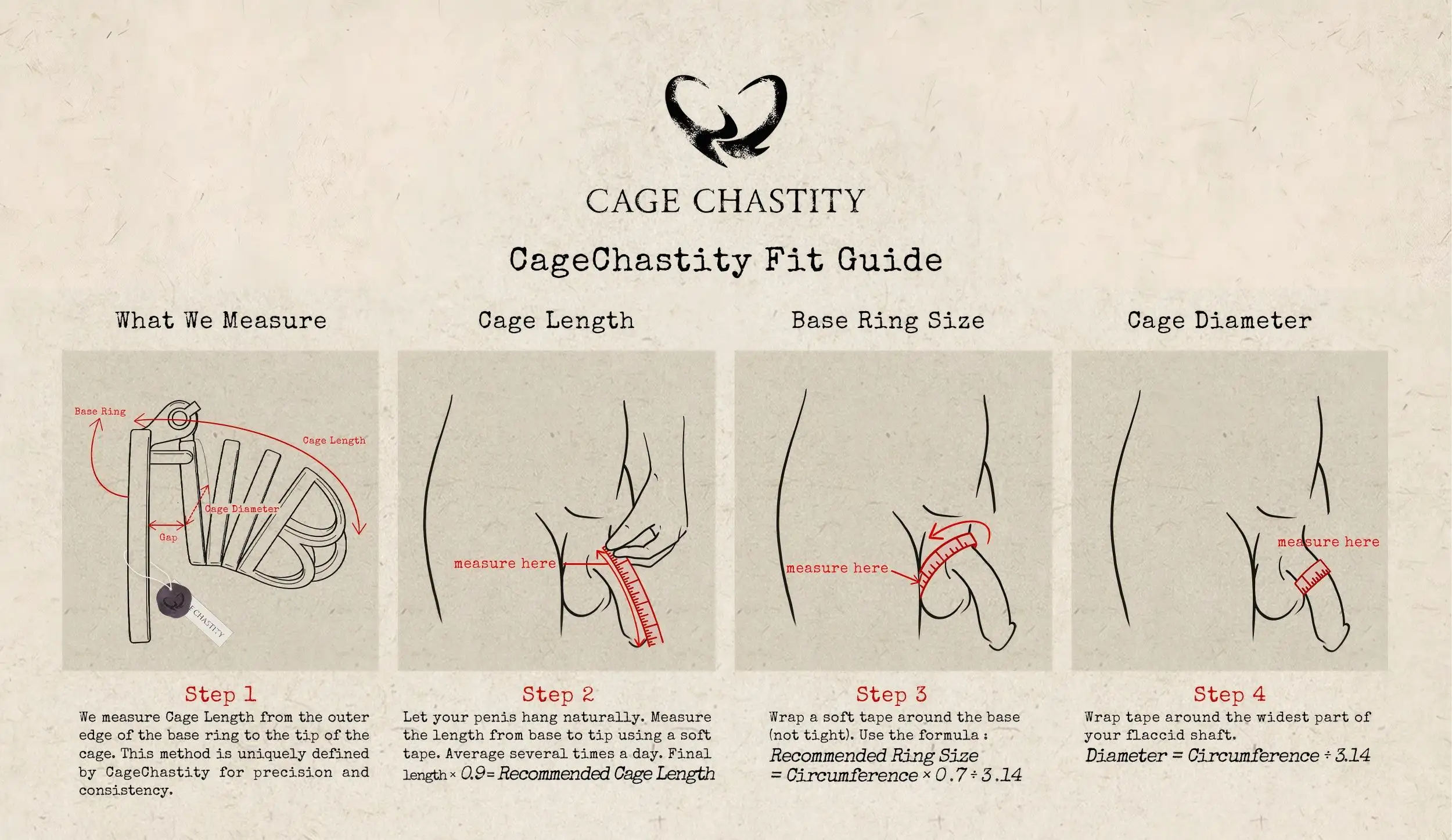
When it comes to choosing the right chastity cage, the very first challenge is sizing.
If the size is not right, you’ll realize it soon after you put it on. When it’s too loose, your shaft may keep rubbing inside the cage or even slip out; when it’s too tight, it can feel a lot more extreme than you planned for.
One of the most common questions we receive is about how to measure correctly and how to choose the right size. You can find endless information online, but unfortunately, there’s no single clear standard or widely accepted answer. What’s worse, even if you’ve taken the time to measure yourself accurately, you might still struggle to pick the right cage because many shops label sizes inconsistently or even incorrectly. For some, selling often matters more than helping customers get the correct fit.
This guide aims to solve two key problems:
- how to measure your size accurately
- how to use that data to choose a cage that truly fits your needs and wear style
Measuring correctly isn’t complicated; it only takes a few minutes, and you’ll rarely need to repeat it. That’s exactly why we wrote this complete guide. We’ll take you step by step through the process, covering length, base ring diameter, and important structural details. Along the way, we explain not just how to measure but why it matters, and we share common mistakes to avoid. If you feel some anatomy notes are more detail than you need, you can skim those sections—but we strongly recommend giving them a look. This article brings together years of experience, in-house testing, and feedback from hundreds, if not thousands, of customers, and we’re still improving it today. Spend a few minutes reading, and we’re confident it will help you get the fit you want.
By the end, you’ll be able to take your measurements, compare them to our accurately listed product dimensions, and confidently find the cage that’s truly made for you.
2. Measuring Length
2.1 Understanding Your Penis
The penis is a surprisingly delicate organ, and despite the slang term “boner,” there’s no bone in it at all. It’s more like a soft, flexible tube made of spongy tissue that fills with blood when aroused.
Inside your penis are two main chambers called the corpora cavernosa. When you’re flaccid, these chambers hold very little blood, keeping things soft and compact. When aroused, they fill up, expanding in both size and firmness.
Here’s something most people don’t realize: about half of your penis actually sits inside your body. What you see on the outside is just the visible portion of a longer internal structure. Because this inner part is made of soft, flexible tissue, it can shift and retract slightly when pressure is applied, which is exactly why flat and inverted cages can achieve such deep compression. (We talk more about those advanced types in a separate guide for experienced users.)
Every penis is unique. Some are circumcised, some aren’t; some have more foreskin, some have less, it’s all completely normal.
Another thing we get asked from time to time is the difference between “shower” and “grower”
- Shower: Looks longer when soft and mostly just hardens during an erection.
- Grower: Looks shorter when soft but expands a lot more when erect.
Being a shower doesn’t automatically mean “bigger,” and being a grower doesn’t mean “smaller.” Most end up close in size when fully erect.
For chastity cage sizing, this difference doesn’t matter. Always measure and fit your cage while fully soft and relaxed. That’s the only way to get an accurate, comfortable result, no matter what type you are.
2.2 How to Measure Length
Grab a soft measuring tape (like a tailor’s tape). Make sure you’re fully soft and naturally hanging. If you don’t have a flexible tape, a simple piece of string and a ruler will work just fine.
- First, stand up straight and relaxed. Don’t lift your penis with your hand, and don’t try to measure while lying down or leaning.
- Second, place the zero end of the tape right where your penis meets your body — that’s the natural root. Don’t press it into the bone; just let it rest at the skin’s surface.
- Finally, measure along the top, all the way to the very tip (for most people, that’s right around the opening of the urethra).
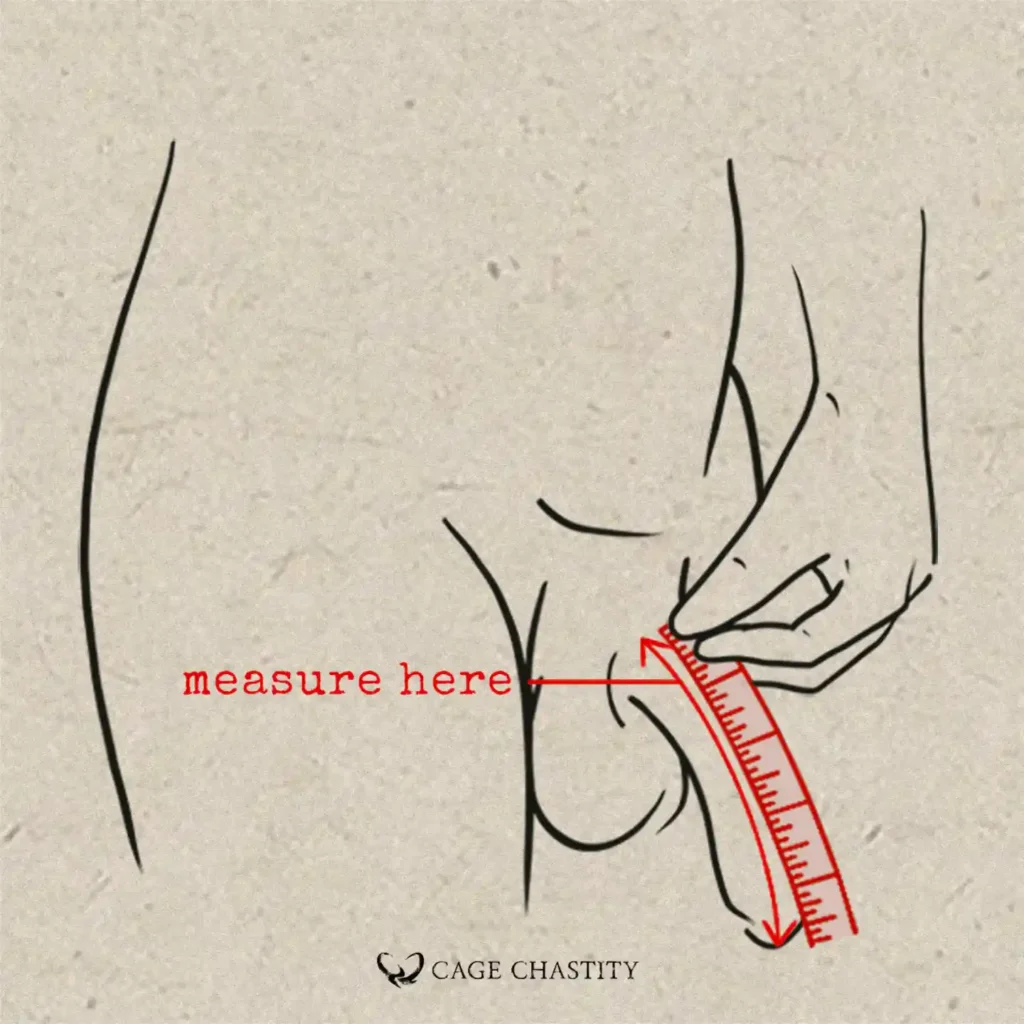
Take a few measurements. Record the most consistent number, or go with the smallest one that feels reliable — that’ll be your flaccid length.
Now, don’t rush out and buy a cage with that exact number. In most cases, you’ll want a cage that’s 80% to 90% of your flaccid length. That range gives a snug but comfortable fit for daily wear. We’ll explain why this adjustment matters — and when to make exceptions — in Chapter 4.
2.3 How to Measure Diameter
This part’s easier. While you’re still fully flaccid and naturally hanging, wrap a soft measuring tape (or a string) around the thickest part of your shaft, usually near the base. Keep the tape close to your skin but don’t squeeze it tight.
Write down the circumference, then divide it by π (3.14) to get your diameter. Measure a few times and use the number that comes up most often.
In most cases, small differences in diameter won’t change how a cage feels that much — variation here is minimal. So if you want to keep things simple, you can skip this step and focus mainly on length and ring size.

2.4 Tips for Accurate Measuring
- Stay fully soft.
Always measure when you’re completely flaccid. For some people, that’s easier said than done — even a light touch can cause an erection. Take your time, relax, and wait until everything has settled down before you start. - Let it hang naturally.
Don’t lift or straighten your penis while measuring. When you’re wearing a cage, it naturally points downward — your measuring position should match that. - Avoid pressing into the fat pad.
There’s no need to dig into the skin or press all the way down to the pubic bone. Measure from the natural surface of your body, not the bone underneath. - No soft tape? No problem.
Use a piece of string instead — wrap it along or around the shaft, mark it with a pen, and measure it against a ruler. A shoelace works fine too. - Measure more than once.
Take several readings and use the one that comes up most often. Usually, your longest and shortest numbers shouldn’t differ by more than 1 cm.
2.5 Additional Notes
- Don’t measure right after any sexual activity. The erectile tissue needs a little time to return to its natural, fully relaxed state.
- Avoid measuring when it’s too cold or too warm — for example, right after a hot bath. Extreme temperatures can make your measurements inaccurate.
- Don’t buy a cage that matches your flaccid length exactly. You’ll want to adjust it down slightly, as we’ll explain in Chapter 4 when we talk about choosing the right cage length.
3. Measuring the Testicles
3.1 Understanding your testicles
Your balls sit inside a soft, stretchy pouch of skin called the scrotum. It protects them and helps keep them at the right temperature. Inside are small tubes and blood vessels that react to heat, cold, and touch, which is why this area feels so sensitive.
Unlike most organs, the testicles are outside the body. They hang there because sperm need a cooler environment, just a few degrees below body temperature, to stay healthy.
The scrotum adjusts itself all the time. When it is cold or when you are tense, it tightens and pulls the balls closer to the body. When you are warm or relaxed, it loosens so they can hang lower and cool off. You might notice they often feel slightly cooler than the rest of your body. That is perfectly normal.
Most people have one ball that hangs a little lower than the other, often the left one. This small difference helps them move freely without pressing against each other.
When you put on a chastity cage, start by guiding one ball through the base ring, then the other, and only after that move on to the shaft. Doing it in this order keeps everything in place and prevents twisting or pinching. You can find a detailed guide on this process in our article How to Put On Chastity Cages.
Because the scrotum moves and changes shape depending on temperature and body state, the size of the base ring is very important. It should stay secure while still giving enough room for comfort. If it is too loose, the cage may slide. If it is too tight, it can press too hard or affect blood flow when your body moves.
Your balls are more delicate than your shaft. If they are strained, they take longer to recover, and it can stay sore for days. Finding a comfortable fit is always worth the effort. (Of course, if you are into CBT, that is a different kind of play.)
3.2 How to Measure for the Base Ring
The base ring is one of the most important parts of any chastity cage. It decides how stable the device feels and how comfortable it will be over time. The ring sits at the very root of your penis, just above the scrotum, wrapping around the point where your shaft and balls meet.
Measuring for it is simple and similar to measuring length. Stand naturally while completely soft, and use a soft measuring tape or a thin piece of string to wrap around the base of your penis and scrotum, forming a full loop. The tape should gently touch the skin without pressing down. You can spread your legs slightly for balance, but avoid squatting.

After you get the circumference, divide that number by 3.14 to find the diameter. If you don’t have a soft tape, a shoelace or string works fine, just mark the overlap and measure it with a ruler.
When you see the number, it will look much larger than expected. You’ll notice that no ring matches it exactly and this part is which we get asked frequently. Don’t worry, that’s normal. To get your recommended inner diameter, multiply your measured number by 0.7.
This 70% adjustment comes from real experience. The reason behind is rather simple: when you measure, your scrotum is loose and hanging, but once you wear a cage, it will help hold the ring in place. Our goal is to find a balance that keeps the ring secure without cutting off blood circulation or putting too much pressure on your balls.
If the ring is too small, you may feel pressure or aching in the testicles, often called “blue balls.” In that case, remove it right away, take a break, and try a slightly larger size. Based on years of testing and feedback, the 0.7 ratio works well for most people, though the perfect fit is always personal.
If you’re unsure where to start, resin cages (like cobra collection) are a good choice. Most of our resin models include several base rings in different sizes so you can test and find your best fit. You can check the “Package Includes” section on each product page to see how many rings are included.
Different ring shapes create slightly different sensations. Flat, arc, ball-support, and wearable styles each feel unique. For resin cages, the difference between shapes of the same size is usually small. For example, if a 50mm flat ring feels right, a 50mm arc ring will almost always work too.
For metal cages, it’s a bit different. Metal arc rings are thicker than flat ones, so they can feel tighter even when the diameter is the same. If you prefer metal and plan to use an arc-style ring, choosing one size larger sometimes gives a better balance between comfort and security. (We recommend purchasing two or more rings for each metal cage, and most metal products include discounted ring bundle options for easy selection.)
A good way to test your fit is with your fingers. You should be able to slide one or two fingers between the ring and your skin without effort.
- If you can’t fit even one finger, the ring is too tight and may pinch or restrict blood flow.
- If you can easily fit three fingers or more, it’s too loose and might not hold the cage in place.
3.3 Tips
- Room temperature
Measure in a room with a moderate temperature. Avoid extremes of heat or cold, since both can affect your scrotum’s position and lead to inaccurate results. - Measure more than once.
Measure two or three times throughout the day and use the average as your reference. Your body can shift slightly with movement and temperature, so consistency is key.
3.4 Common Mistakes
- Measuring in the wrong position. Wrapping the tape around the middle of the shaft or under the testicles instead of the base will give incorrect results.
- Pulling too tightly. Trying to force a smaller number by pressing the tape against the skin will only lead to a ring that is too tight and restricts blood flow.
- Measuring in extreme temperatures. After a hot shower or in cold conditions, your body reacts and changes shape. Cold temperatures in particular make the testicles retract into the scrotum, which makes it almost impossible to measure correctly.
4. Choosing the Right Cage
By now, you have all the key measurements you need. The next step is the most important one: choosing the right cage.
Getting the correct cage length, inner diameter, and base ring size is what makes the difference between frustration and real comfort. Among these three, finding the ideal cage length is usually the hardest.
Fortunately, every model on CageChastity has been carefully measured (we’re currently updating this information, so some products may still display older data), so even first-time buyers can choose confidently. In each product’s Product Specs section, you’ll find detailed data for both cage length and tube length, along with the recommended flaccid penis length to make your selection easier.
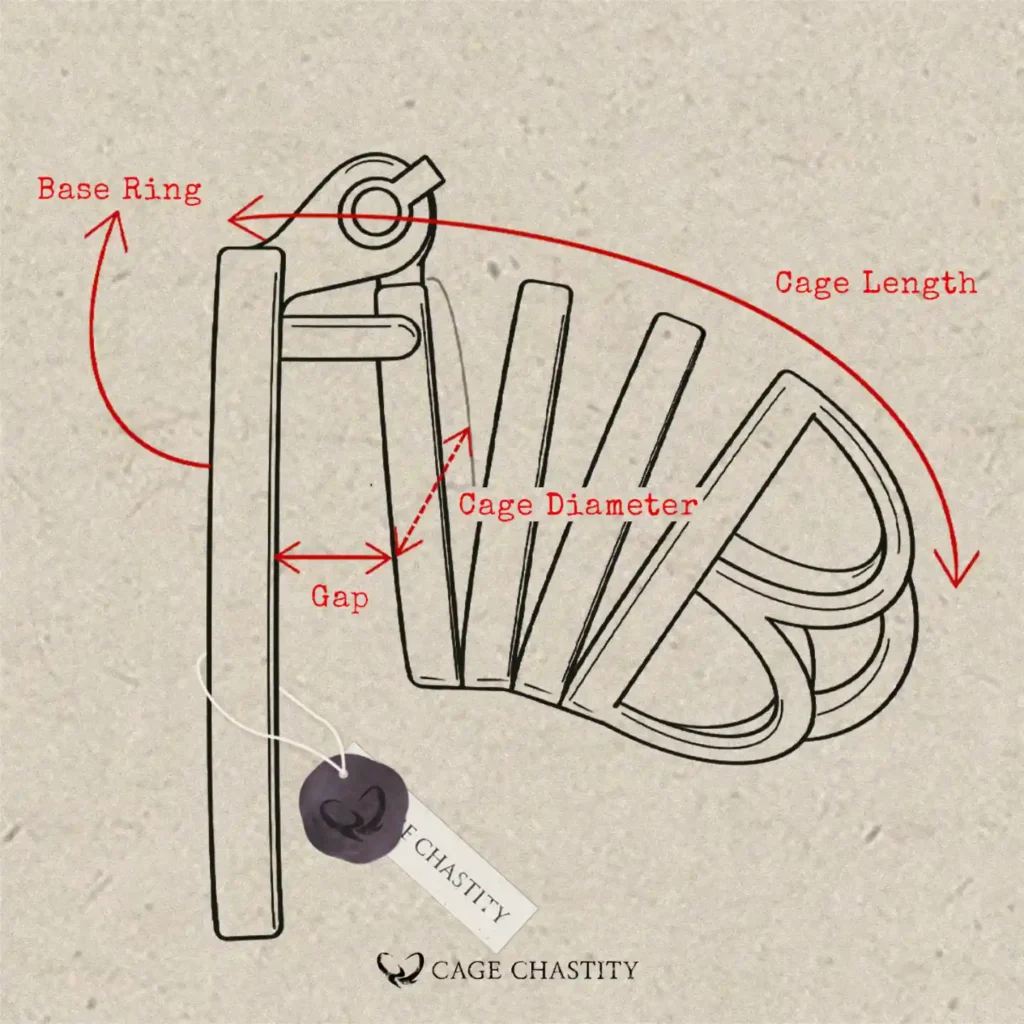
If your favorite cage does not have an exact size match, it is usually better to go slightly shorter rather than longer. A longer cage often allows too much movement, which can cause rubbing or slipping.
For users who enjoy a more intense experience, our micro cages offer a more compact option compared to standard comfortable lengths. Flat designs go even shorter, sometimes with cage length under 50mm, where length almost stops being a factor. Inverted styles take it further, drawing the shaft partially inside the body.
We will discuss these advanced types in detail in later articles. For now, you can use the following reference table to help guide your selection.

5. Frequently Asked Questions
5.1 I’m new and worried about picking the wrong size. Any advice?
Read this guide carefully and follow the steps. Many users measure as instructed, choose a product that matches their numbers, and get it right on the first try. That said, no method can guarantee a 100% perfect fit the very first time—if someone claims that, it’s likely exaggerated.
Don’t stress: you’re choosing a wearable device, not running a lab experiment down to nanometers. Small deviations won’t ruin your experience. And remember, chastity training is a journey—over time, many people intentionally move toward smaller, more “intense” fits. If you’re unsure after measuring, we generally suggest choosing slightly shorter/tighter rather than larger.
Finally, our confidence comes from precise, verified measurements of every cage we sell. If you buy elsewhere, listed sizes may be inconsistent or inaccurate. We’ll publish separate articles with product recommendations.

5.2 My measurements fall between two cage sizes. Should I size up or down?
Go smaller. From thousands of customer cases, the most common sizing mistake—especially for first-time buyers—is choosing a cage that’s too large.
5.3 I’m a beginner. Which material should I choose?
Resin or metal. We often recommend resin for a first cage (cobra series for example) because most resin sets include multiple base rings, letting you test different fits in one purchase. Metal is excellent too, but metal rings are usually purchased individually.
You can also consider an upgraded hybrid: a resin cage tube + aluminum base ring. Our standard bundles include multiple rings here as well.
We generally don’t recommend silicone as a first cage. Although silicone feels soft and friendly, it doesn’t provide firm enough restraint for many beginners and can undermine the experience you’re aiming for.
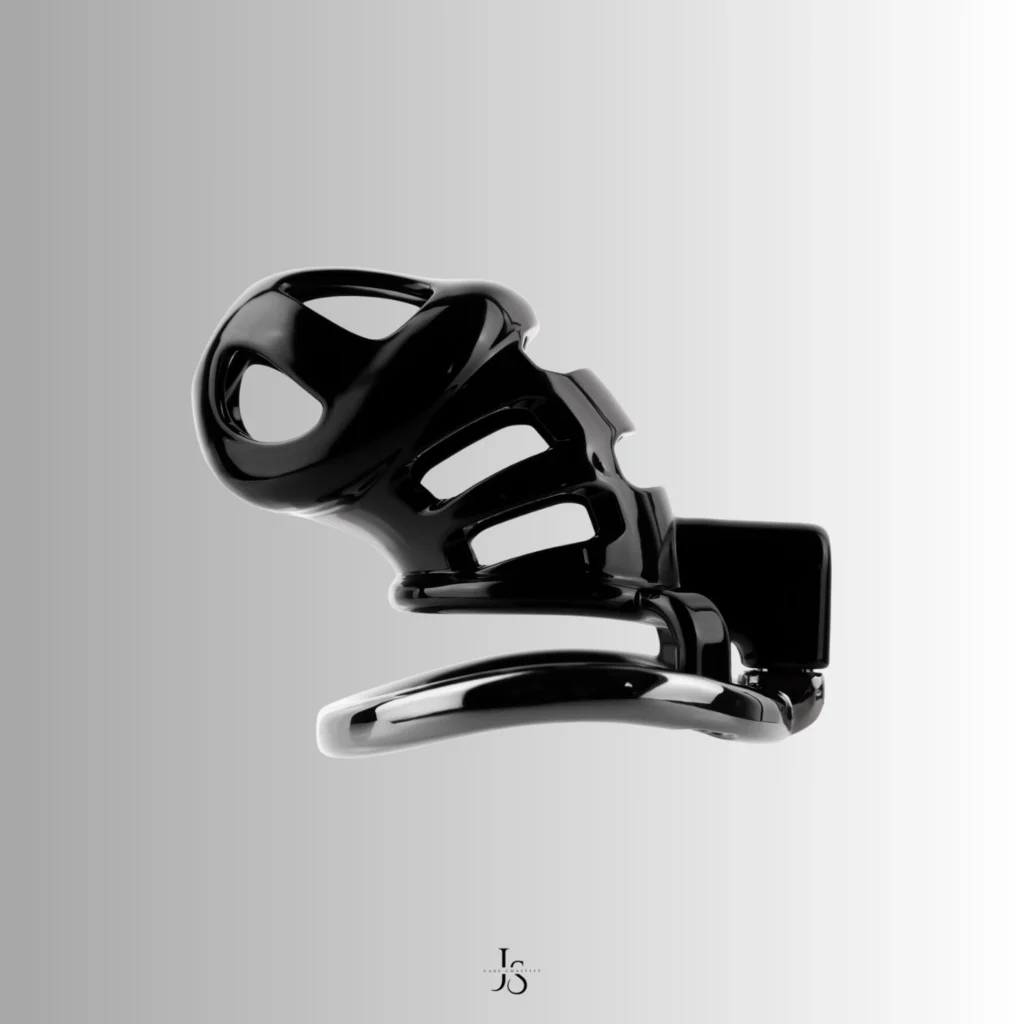
5.4 How do I choose a ring type—flat, arc, dual-arc, with ball support, or wearable?
Each type has its own character. These are classic options, and personal preference matters most; there’s no single “best” for everyone.
For metal cages, one important note: if you order multiple rings, we will hand-match your cage and the rings for compatibility before shipping. Because metal cages and rings are hand-finished, small tolerances naturally exist, and not every ring will fit every tube perfectly.
This also means that if you purchase additional base rings later, there’s a chance they may not fit as precisely as the ones originally matched with your cage. For that reason, we strongly recommend ordering all the rings you need at once, so we can perform the manual compatibility check before shipping. It’s a detail we take seriously, and a service we’re proud to provide.

5.5 I already bought my cage—how do I put it on?
Start with the base ring, then attach the cage tube. You can use the stocking method, with a thin plastic bag alternative, to help your shaft slide fully into the cage tube more easily. We have a dedicated article that walks you through the full wearing process step by step.
5.6 I’m a “shower” or a “grower”. How should I measure and choose?
Follow the same measuring method described in this guide. Regardless of type, measurement and fitting are done when the penis is completely flaccid and naturally hanging.
If you’re a grower, don’t assume that your cage should be longer just because your erection gets much bigger. A chastity cage is designed to secure you in your soft state, not to contain an erection.
5.7 Do I need to remove the cage to pee?
Usually no. Most resin and metal cages are waterproof and include a urine outlet hole. Some designs feature well-aligned openings that allow normal urination once you get used to positioning. Others can be paired with a removable catheter.
We always recommend peeing while seated to avoid splashing and to make cleanup easier. Keep tissues or wet wipes handy, and take your time.
Before putting your pants back on, use a folded tissue strip to gently check the cage tip—sometimes a few drops remain inside.
5.8 My cage keeps slipping forward or downward. What can I do?
This usually means your base ring or cage is too large. It can also happen with heavier materials like metal or depending on your body’s shape.
If your sizing seems correct, consider adding a support strap to help stabilize the cage and base ring. We offer straps in various materials, sizes, and styles to suit different setups.
5.9 How should I clean and care for my cage?
Wash thoroughly, then dry completely. For hard-to-reach areas, use a hair dryer on cool air to remove moisture. Store your cage in a cool, dry place, away from humidity and direct sunlight.
You can find more details in our ‘how to put on chastity cages‘ about cleaning and maintenance tips for different cage materials and finishes.
5.10 Can I sleep in a cage—is it safe?
Yes—as long as the fit is correct and there’s no pressure or numbness. New users should first get comfortable wearing during the day. When you try overnight wear, be aware that early morning (around 5 a.m.) can be the toughest time due to nocturnal erections, which aren’t always linked to arousal. If you feel sustained pain, tingling, or color changes, remove the device.
5.11 Can I wear it outside or while exercising?
Everyday wear outside is generally safe. A properly sized cage should let you walk, squat, climb stairs, and jog without issue. For sports, it depends on intensity. We don’t recommend wearing a cage for high-impact or contact sports—the device can tug on the testicles. And a cage is not an athletic cup; they serve completely different purposes. If you do light exercise, consider supportive underwear to reduce movement.
5.12 Will long-term wear affect size or genital health?
With the right fit, good hygiene, and regular check-ins (periodically removing the cage to inspect the skin and circulation), long-term wear shouldn’t cause negative effects. Long-term or “permanent” wear doesn’t mean “never remove it”—occasional breaks for cleaning, adjusting, resting, and self-checks are recommended.
After extended wear (a week or more), you might notice erections feel a bit restricted for the first day or two after removal; this typically resolves on its own. Bottom line: if anything feels very uncomfortable, take the cage off, let your body recover, and ease back in gradually. If you notice persistent swelling, pain, numbness, or discoloration, consult a medical professional.




